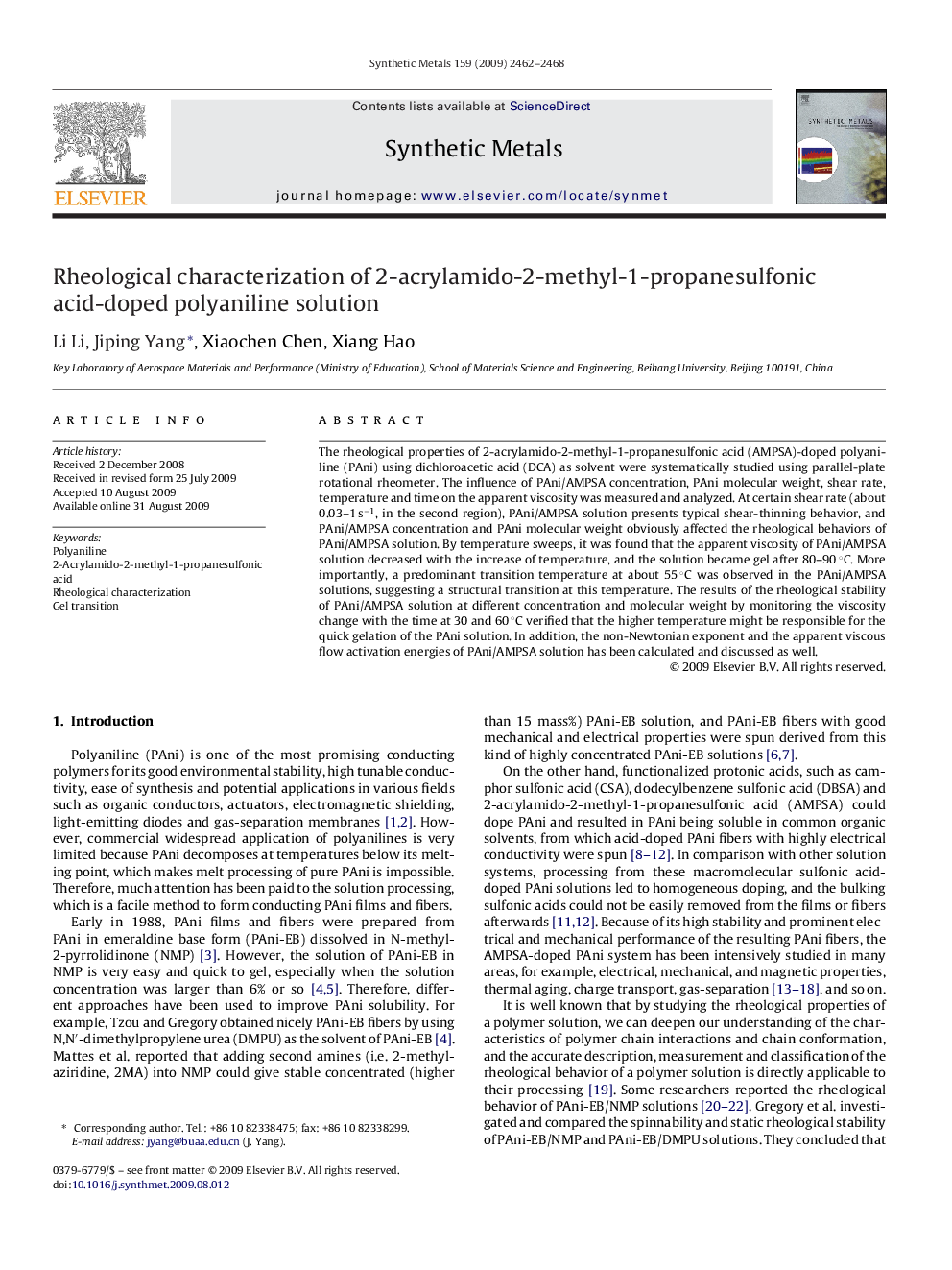| Article ID | Journal | Published Year | Pages | File Type |
|---|---|---|---|---|
| 1442753 | Synthetic Metals | 2009 | 7 Pages |
The rheological properties of 2-acrylamido-2-methyl-1-propanesulfonic acid (AMPSA)-doped polyaniline (PAni) using dichloroacetic acid (DCA) as solvent were systematically studied using parallel-plate rotational rheometer. The influence of PAni/AMPSA concentration, PAni molecular weight, shear rate, temperature and time on the apparent viscosity was measured and analyzed. At certain shear rate (about 0.03–1 s−1, in the second region), PAni/AMPSA solution presents typical shear-thinning behavior, and PAni/AMPSA concentration and PAni molecular weight obviously affected the rheological behaviors of PAni/AMPSA solution. By temperature sweeps, it was found that the apparent viscosity of PAni/AMPSA solution decreased with the increase of temperature, and the solution became gel after 80–90 °C. More importantly, a predominant transition temperature at about 55 °C was observed in the PAni/AMPSA solutions, suggesting a structural transition at this temperature. The results of the rheological stability of PAni/AMPSA solution at different concentration and molecular weight by monitoring the viscosity change with the time at 30 and 60 °C verified that the higher temperature might be responsible for the quick gelation of the PAni solution. In addition, the non-Newtonian exponent and the apparent viscous flow activation energies of PAni/AMPSA solution has been calculated and discussed as well.
